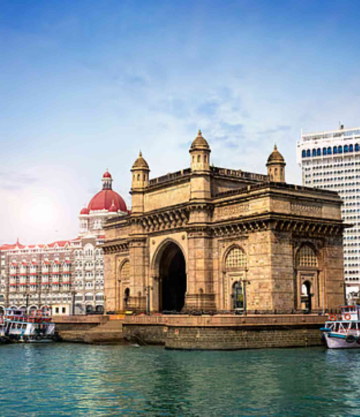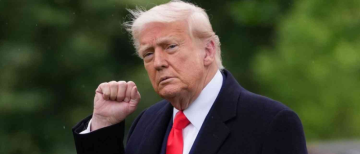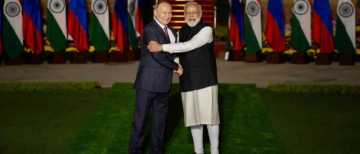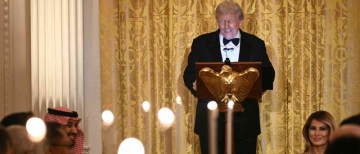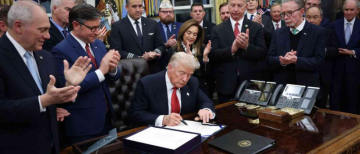The ongoing conflict between Israel and Iran reached a precarious crossroads on Tuesday night, as former US President Donald Trump called for Iran’s “unconditional surrender” amid mounting speculation about direct American military involvement. The escalation followed five days of Israeli airstrikes and retaliatory missile attacks from Iran.

At the White House, Trump summoned his national security team for urgent consultations, following a day marked by erratic rhetoric and mixed signals. Speaking to reporters earlier, he suggested Iran’s nuclear infrastructure would be “wiped out” before the US would need to act. But by evening, his tone had hardened dramatically on his social media platform, Truth Social, where he hinted at targeting Iran’s Supreme Leader.

“We know exactly where the so-called ‘Supreme Leader’ is hiding,” Trump wrote. “He is an easy target, but is safe there – We are not going to take him out (kill!), at least not for now.” Moments later, in an all-caps follow-up, he demanded: “UNCONDITIONAL SURRENDER.”
The war of words has unfolded against a backdrop of active military movements. US aircraft have been quietly repositioned to bases in Europe and the Middle East, in what analysts interpret as preparation for deeper involvement. While Trump has publicly stated he wants Israel to neutralise Iran’s nuclear facilities independently, experts point out that only the US possesses the deep-penetration bombs required to destroy heavily fortified sites like Fordow.
German Chancellor Friedrich Merz, speaking after a G7 meeting in Canada, declared that should Iran remain defiant, “complete destruction” of its nuclear programme might be unavoidable. France’s President Emmanuel Macron, however, urged caution: “We do not support actions that threaten regional stability. Attempting regime change in Iran by military means would unleash chaos.”

British Prime Minister Keir Starmer echoed a more restrained position, insisting that Trump’s statements did not amount to a decision for direct military intervention. “There was strong consensus at the G7 on de-escalation,” Starmer said, having sat beside Trump at the summit’s closing dinner. Despite public calls for calm, Trump departed the summit early, flying back to Washington to “focus on the conflict”. En route, he reiterated that he was not interested in brokering a ceasefire, but wanted “a complete give-up” by Iran, including an end to uranium enrichment.
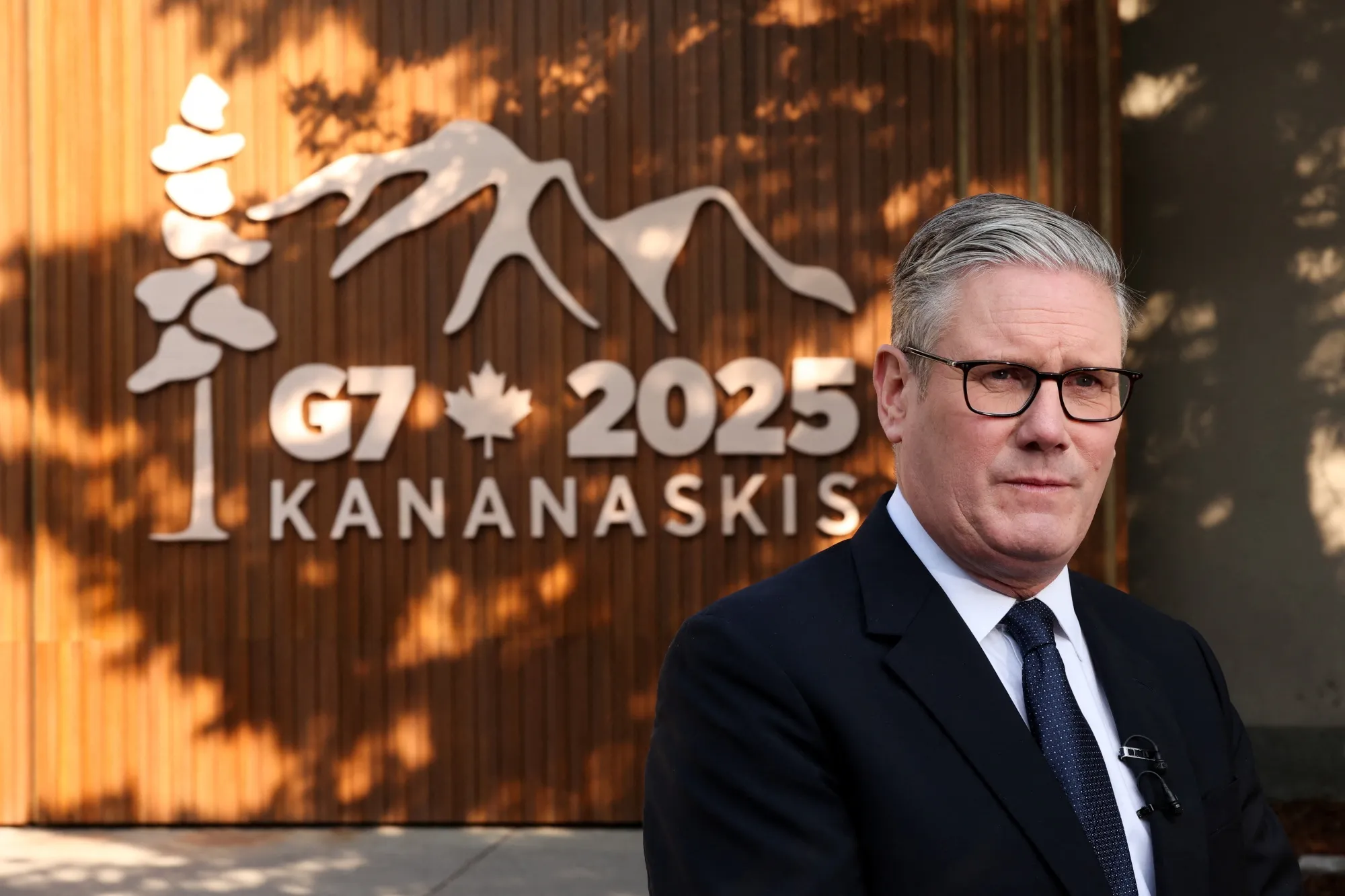
Vice President JD Vance later stated that while any decision rests with the President, “people are right to be wary of foreign entanglements after 25 years of catastrophic foreign policy”.
The Israeli campaign continues to intensify. On Tuesday, CNN cited US intelligence suggesting Iran was still years away from developing a deliverable nuclear weapon—contradicting Israeli claims of imminent danger. Trump dismissed the intelligence, declaring: “I don’t care what she said. I think they were very close to having it.” The Israeli offensive has expanded to include a wide range of targets in Iran, including state infrastructure and military installations. The capital, Tehran, has been repeatedly bombed, with residents in certain districts ordered to evacuate—an approach mimicking Israeli tactics used in Gaza.

Early Wednesday, explosions echoed across Tehran as new waves of Israeli strikes hit locations near Mehrabad International Airport. Among the targets was a state television station, resulting in the deaths of three staff and the interruption of live broadcasts. Oil and gas infrastructure also continues to be hit, while Iran’s retaliation has included missile attacks on Israeli cities, damaging critical infrastructure in Haifa. Iran’s Health Ministry reported at least 224 deaths and over 1,400 injuries since the start of the Israeli assault. Tuesday alone saw at least 24 Iranians killed. In Israel, the death toll stands at 24, with around 600 injured, according to the IDF. Iran has fired approximately 370 missiles since Friday, though the intensity of its response appears to be waning.

Israel claims to have destroyed half of Iran’s missile launchers and killed 11 senior generals—including Major General Ali Shadmani, who had held his post for only four days. “Iran is completely exposed,” an Israeli general told local media. “We have full freedom of action. This is unprecedented.” Still, Iran’s top commanders have responded by urging evacuations of Tel Aviv and Haifa, hinting at further escalation. Hardline Iranian lawmakers have proposed withdrawing from the 1968 Nuclear Non-Proliferation Treaty, though government officials insist they remain opposed to nuclear arms.
Iranian state television has aired calls for the closure of the Strait of Hormuz, a vital shipping lane through which nearly a third of the world’s oil passes. Any such action could spark a dramatic surge in global fuel prices and inflation. The International Atomic Energy Agency confirmed on Tuesday that Israeli strikes had penetrated deep into the underground layers of Iran’s Natanz enrichment plant. Yet attention now turns to Fordow, near Qom, where Iran stores its most highly enriched uranium. Kelsey Davenport of the Arms Control Association downplayed the risk of catastrophic fallout if Fordow is attacked: “An explosion there may release some radiation and chemical toxicity, but it would likely be contained. The bigger issue is that Israel knows it cannot destroy the site entirely.”

Israeli leaders, meanwhile, have hinted at an expanded set of war objectives. Prime Minister Benjamin Netanyahu listed three aims: the dismantling of Iran’s nuclear programme, the destruction of its ballistic missile capabilities, and the elimination of its “axis of terror”. Foreign Minister Gideon Sa’ar later clarified this as an ongoing mission: “First we cut the tentacles—Hamas, Hezbollah. Now we strike the head.” Though Sa’ar insisted regime change was not the war’s goal, he acknowledged it could be a byproduct of Israel’s actions. As the war enters its sixth day, there is little indication of either side backing down—only of the conflict drawing the world deeper into its orbit.
With inputs from agencies
Image Source: Multiple agencies
© Copyright 2025. All Rights Reserved Powered by Vygr Media.








